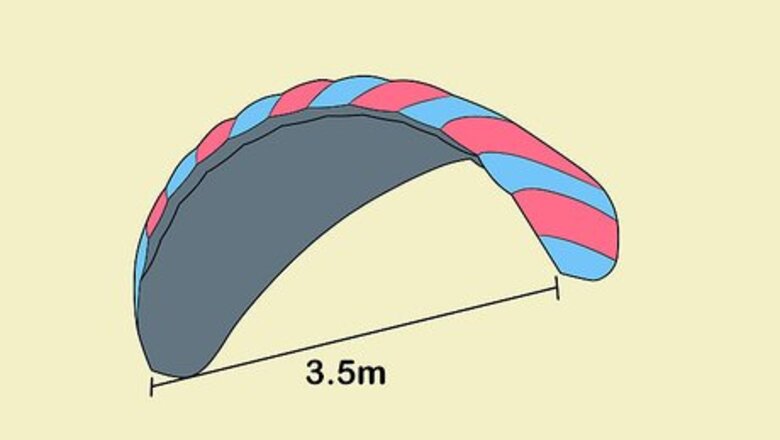
views
Choosing Your Equipment
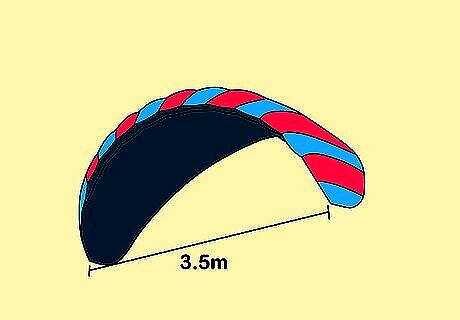
Pick the right surf kite. You will want a beginner or training kite with high stability, a wide wind range, and moderate turning speed. Beginner kites are usually smaller and advertised as such. Maximum upwind drive is also important. As you get more experienced you can feel free to pick a kite board that suits your individual style and needs. Be sure to pick a kite that is appropriate for your bodyweight. They should be clearly labeled. Normally a beginner will practice with a soft trainer kite first; this has a size of 0.5 to 1.5 meters squared. Then you'll buy a bigger kite depending on the local wind conditions. This kite will be in the size range of around 7 to 13 meters squared. You use bigger kites for lighter wind and smaller kites for stronger winds. If you are unsure, ask a dive or surf shop employee.
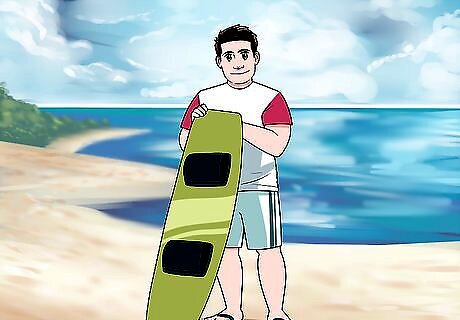
Select a kite surfing board. Choosing the right kite surfing board is essential. Every kite surfer is different, and you'll need to find one that is comfortable for you. Beginners will usually want larger, more stable boards. Be sure to pick up a board that is advertised for your weight. Your board shouldn't be too heavy. You should be able to carry it in one hand. Make sure it has secure bindings to keep your feet connected to the board. As you become more skilled you may want to get a smaller board, with more rocker so that you can learn to do tricks.

Get together your safety equipment. In addition to having secure bindings on your board you will need safety equipment. You'll want an impact vest and a helmet at the very least, especially if you are a beginner. Be sure to also equip yourself with a safety leash to be able to use your kites safety release function. You may also want to wear a wetsuit, especially in cold water. A secure bathing suit is necessary. A string bikini probably won't do.
Learning to Kite Surf on Land
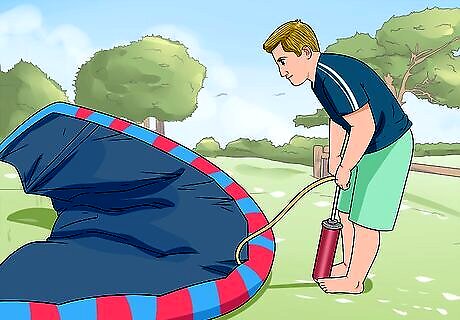
Inflate your kite. Before you can do anything you will need to put your kite together and get it in the air. Lay your kite on its back, connect it to the pump, and inflate it.Setting up a surf kite for the first time isn't that hard, though it is easier if you have an experienced friend to help. Tether your kite down while inflating, so it doesn't blow away. Learning on land can be done on the beach or even at a park. You don't necessarily need to be near the water for this, generally stable wind.
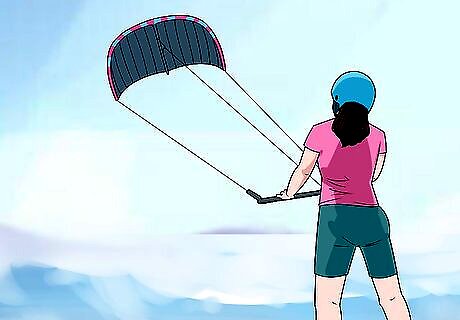
Launch your kite. Walk backwards, downwind towards the launch point, laying out your line cleanly behind you as you go. Your partner should turn the kite over and stand with the kite ready in the edge of the wind window to catch the wind. When you are ready, give your friend a signal to launch the kite. It should fly up and as high as possible, while being centered.
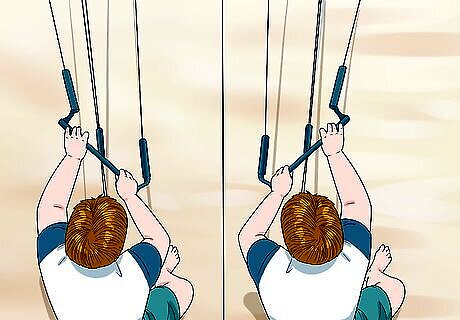
Practice flying. Get used to flying your kite on land. You should be in control of the kite at all times. Practice flying the kite at the right and the left without losing control to practice turning. The area in which you maintain control is called your wind window. Keep practicing until you get used to your specific kite's wind window. For most kites the window will be at approximately 11 o'clock on the left and 1 o'clock on the right. If desired and if the area is clear, you can ride a skateboard while you practice flying your kite.
Moving to the Water
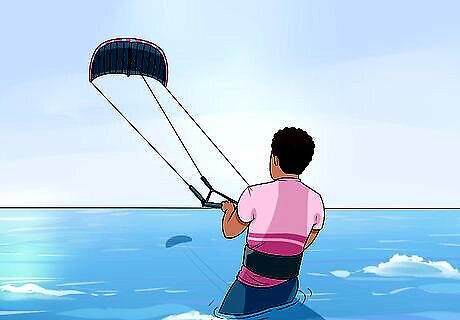
Get yourself wet. Once you are comfortable with the basic mechanics of the kite, it is time to get in the water. You'll do this without a board at first, and in wind conditions that are below 20 knots. Be sure that you are in a relatively clear area of the water. You don't want anyone within 100 yards. Practice the same flying exercises that you did while on land. You will want to make sure that the area downwind of you is clear. That is probably where you will end up!

Practice body dragging. Whilst the kite is in the air, practice dragging yourself back and forth using the wind through the water. You'll be "kite surfing" without a surf board. Do this until you are comfortable controlling your kite.This is essential to safety so make sure you are practiced with it before progressing further. You'll need to know how to do this if you ever have to retrieve a lost board.
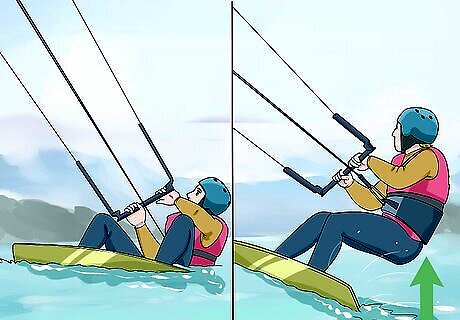
Get on your board. Whilst your kite is in the air, sit back in the water supported by your harness. Then put your feet onto the board and float to get used to the feeling. When ready, pull yourself up into a standing position. Keep your center of gravity low to maintain your balance before attempting to steer or surf. Don't stand up too fast or aggressively - you might tip over the other way! During the offseason you can practice your "board skills" on a skateboard.

Practice changing direction. Turning the kite will be harder now that you are on your board. Push the steering bar forward to bring the kite over your head. This will slow you down, allowing you to more easily move the kite to the other side of the wind window and start in the opposite direction.
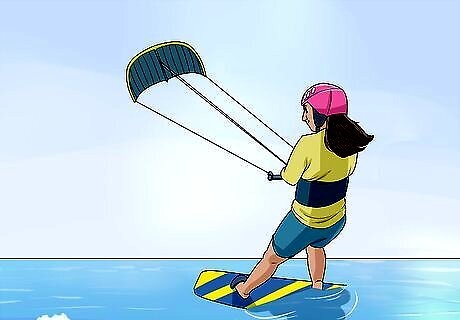
Practice practice practice. Rome wasn't built in a day, and kite surfing is a hobby that takes a long time to master. The more time you are on a board with a kite in the air, the more your skills will improve. Start slow at first and always stay safe.


















Comments
0 comment